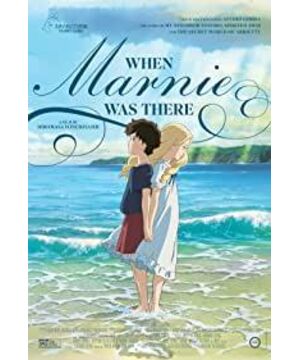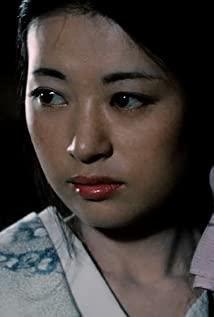The first beauty is the story. (So I decided to find the original novel and read it again.) The first two-thirds are all slightly dull stories. The gloomy and inferior girl Anna is difficult to get along with her adoptive mother and the people around her because of her own feelings. Summer vacation, and then discover the mysterious blond girl Mani, the two secretly play each other every day. The filming is quite suspenseful about the relationship between Mani and the end, but there are many such stories. The only son who grew up in a lonely city often fantasizes about creating a playmate by himself. Almost every child will have this kind of story. The experience and experience of "Pan's Labyrinth" and "Inside Out", including the ending of the legendary Doraemon, have similar plots. In particular, the doll held in Anna's hand when she was young was very similar to Mani, so imagining playmates seemed to be the right answer. In the last third, when the plot that you thought was the final answer appeared step by step, the viewer would become more and more puzzled along with Anna. I was also surprised when Anna said to Cai Xiang "Mani is just my imagination" and Cai Xiang took out Mani's diary. Then began the suspense of "Who is Mani?" The answer to the mystery was revealed quite quickly, because there were actually too many foreshadowings in the first two-thirds, and the whole story was almost finished in one go. Annie heard "forgiveness" in her mouth, and Annie's heart knot for her deceased relatives was also lifted, and she was reunited with her adoptive mother. The gloom on the little girl's face finally dissipated.
The second beauty is naturally the love between the two little girls. Even before they met, they were secretly attracted. When they first fell in love with each other, they felt the joy of going for an appointment in secret every day. Whether they were rafting or dancing together under the bright moonlight, they could feel the heartbeat of Xing Nai's deer. Especially when Xing Nai saw Mani and He Yan's quarrel after dancing, she clearly showed the feelings between the two. However, the plot brakes here in time, beautiful and correct. The relationship between the girls is beautiful and unrealistic, like those nights spent with Mani. Ghibli's works are often tenacious and innocent girls and brave and kind-hearted teenagers. The teenagers are often a little careless. Lonely, equally vulnerable, and equally eager for companionship and love, Mani tells very aptly how two girls who look alike support each other step by step and become strong. In the barn, Anna's growth and changes are obvious, and why didn't Mani seek the love and forgiveness of her daughter and grandson represented by Anna?
The third is truth. The aptness to the psychological description of girls is the traditional advantage of Ghibli, which is delicate and true. There are comments that Anna is the least likeable heroine, but apparently Anna is the real one. Chihiro's fantasy experience dilutes the mischievousness of her urban child. If Anna's upbringing still creates a girl who is kind to the world, curious and brave, it is an illusion. Children who have experienced the death of their relatives since childhood, lived in social security institutions, and were finally adopted, and have asthma problems, must be as inferior and gloomy as Anna, plus the difference of mixed blood, only introverted and withdrawn are the most rebellious children in adolescence. common features. As for Mani, it also seems to have its own bright light, but in reality, he is equally insecure. In reality, Mani is also embarrassing because of his character and unfortunate fate. Similarly, only kind and loving adoptive mothers may not be able to handle all relationships well, and worry about their children manifests as nagging that makes them rebellious. A story like this resonates with anyone who remembers their youth.
Although there are no beautiful fantasy ideas and grand thinking about the home environment, it is a story that perfectly fits together, two real girls with various minor problems, the delicate and ambiguous feelings between the girls, and finally, calling for forgiveness, family affection and At the end of love, the memory of Mani, a warm growth story told through the love of a girl like moonlight, is fresh, beautiful and eye-catching, but it can only be nominated, and the ending of not winning the grand prize is both unexpected and reasonable. middle.
View more about When Marnie Was There reviews











